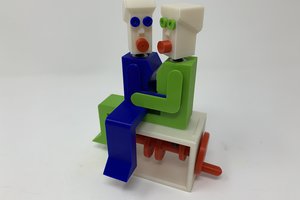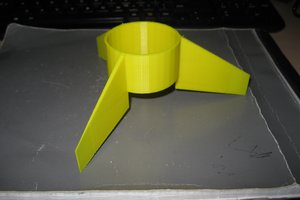The part was not easy to model (at least for me). To fit in the back of my multimeter and to adapt to the curved pocket, the part has to be curved, too. I used the spline tool to get the approximate form, however it is not perfect.
The side view of the stand and how it is curved:

Even harder to determine was the position of the knobs that are pressed into two pockets of the multimeter. These knobs are the pivot points and they allow the stand to fold out. They should be exactly in the correct position, if they are not, the handle may be unable to rotate at all.


The front view of the sketch for the stand. The back of the multimeter made some cutouts necessary.

In the end it was more "try and error" than "measure, model, print". I think, overall I had to print the part three or four times to get the right design. This is why a 3D printer is so great and handy. You can redesign the part over and over again, make subtle changes and improve your part this way.
The finished 3D model:

You can download the STL and Fusion360 model file below. The stand was printed in PLA with the following parameters:
- 100% infill
- printing speed 60mm/s
- 205°C hotend and 60°C bed temperature
- 0.2mm layer height.
 Matthias Kesenheimer
Matthias Kesenheimer


 Hari Wiguna
Hari Wiguna
 Greg Zumwalt
Greg Zumwalt

 AVR
AVR
Nice idea! I have a small collection of multimeters with broken stands...and keyboards with broken feet, too.